NATURE INSPIRED INVENTIONS --- The Compound Eye Camera; "Annie smile! That's it, alright, say cheese".
One of the famous slogans in the world is that "time waits for no man". This means that even when you are having fun with the people you love (which I think is the best moments in one's life), no matter how long you guys spend having fun, it would end. Thus, days keeps coming and going, days keeps coming and going. Since there is nothing we can do to control time, (forgive me, if you are the real Hiro Nakamura.. smiles), the only thing we can do is to save the moment either in our minds or as a picture.
This have been the driving force in the invention and advancement of the camera. At first, man capture wonderful moments by drawing them. Most times these drawings took hours to complete. Later, with the invention of camera, it took lesser and lesser time till its now reduced to seconds. But still, man had a problem he couldn't solve, the images he captured, even though they look like the object wasn't as perfect as the object. It wasn't until recent when man studied the eyes of arthropods, like the fire ant, did man discovered how to make his camera capture a more perfect image.
Today, we will be discussing about cameras, how they where invented, what inspired the inventions, the limitations of cameras and how nature inspired the solution to those limitations.
You can visit The Tourist Checklist to see how photography of places in the world have helped us arrange things to do around the world
CAMERA
We define a camera as an optical device which is used for capturing or recording of images and also has the ability to stored the image or/and transmit it to another location. The images captured by the camera can either be a still single image, or a sequence of moving images, which we refer to as a video. The first notable photograph taken by man was in 1826 by Joseph Nicéphore Niépce.
Unlike other machines that require a direct contact between the machine and the object it wants to sense, the camera is a remote sensing device. It can sense the subject without touching it. The major element of a camera is the lens which is the camera's "sense organ". Cameras work in the same principle as the human eyes works.
PARTS OF A CAMERA
These 10 parts can be found in all cameras, regardless of whether it is a digital compact or digital SLR (Single lens reflex) camera.
Lens
This is the most important part of a camera, as this is where the light that reflects from the object to be captured enters the camera. It is literally where the process of photo capture begins. The lens of cameras can be made to vary both in focal length, aperture e.t.c. Also, it may either be attached permanently to the body of the camera or made in such a way that it can be easily detached.
Note:- Focal length is the distance in which the lens catches the most effective view, and it is measured in millimeters. It is worth noting that a lens with a lower millimeter focal length value has a broader field of view than the one with a much higher millimetres value.
Viewfinder
This is a visual source in a camera which displays how the object will look when it's captured. It is by looking through this can will one decide if the object or camera is positioned correctly for capture, and through it make some changes if the need be.
Body
This is the casing and the frame that bears the lens, and every other component of the camera. The body of the camera can be of different shapes, and sizes, some can even fit into someone's pocket.
Shutter:-
This is the part of the camera that controls how long the sensor, which is inside the camera, gets exposed to light.
Shutter Release
This is the bottom that controls the shutter. It controls when the shutter open. The camera is able to capture an image only when the shutter opens and light passes through it, thus, the shutter botton is where the photographer clicks to capture an image. The length of time for the shutter remains open is determined by the shutter speed.
Aperture
This is the name given to the opening of a lens through which light passes through into the camera. The aperture varies the diameter if the lens opening, by so doing, it controls the amount of light that reaches the image sensor.
Image Sensor
This is the part of the camera that converts the optical image that comes into the camera to electronic signal. This electronic signals is then sent to the memory card. The two main types of image sensors we use in digital cameras are the CMOS and the CCD. Though both of them work through difference means, the still accomplish the sane task.
Flash
This is consist of an electric bulb that shines only momentarily and then off within seconds. The aim of the flash is to provide extra light during dim conditions.
HISTORY OF THE CAMERA
The history of cameras goes back as far as the 1500s. A man named Ibn Al-Haytham (also known as Alhazen), is the first man to create a camera. This pinhole camera he created, which is also referred to as Camera Obscura, was based on a the descriptions made by a Han Chinese Philosopher Mozi who lived between 470 - 391 BC. Based on the description made by the philosopher, he predicted that the images that would be formed by the pinhole camera will be inverted, and that was exactly what happened when Ibn Al-Haytham tried to view an image produced by the pinhole camera.
There was so many problems associated with this first pinhole camera. Apart from the fact that it is not portable, as the camera was made up of a darkened room with a lens on an opening on a wall, the images formed by the pinhole camera was also very blur. Remember, at that time there was no successful way of capturing the image from the pinhole camera. The only way for someone to do that is by manually tracing them. It wasn't until the the time of Nicéphore Niépce did man realize how to capture an image. But as time went by, even before the birth of Nicéphore, man began to make the size of the pinhole camera less bulky.
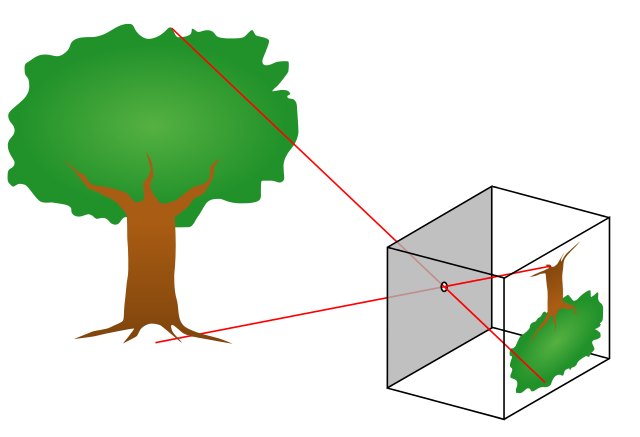
Picture by en.User Wikicommons CC BY-SA 3.0
Images formed by a pinhole camera are inverted
Nicéphore Niépce captured the first partial successful image in the year 1816. He achieved this by the use of a small camera and peice of paper that is coated with silver chloride. With this, he managed to capture a temporal image, but yet still, that wasn't the end of the image capture problem, therefore he kept experimenting more and more. He even made use of the Bitumen of Judea in lightly coating surfaces, so as to be able to capture images on them.
Nicéphore Niépce wasn't the only one that was inspired by the works of Ibn Al-Haytham. By 1839, most philosophers and scientist of those days have made so much contributions in making a more suitable camera. One of the most notable achievements in the making of a camera that raised the world's hope about how great future cameras will be was the invention of the Daguerreotype Camera. It was invented by Louis Jaques Mandé Daguerre who was Niépce's partner. This camera is the first camera to be announced to the public and also, after it was invented, it was the most used camera for more than 20 years after its invention.
Later, a man named Désiré Van Monckhoven invented the collodion dry plates, which can be used to capture images, these plates works like nowadays films. In 1871, Richard Leach invented the gelatin dry plate which lead to an improvement in the both quality and speed of the photographic process. In 1878, man discovered the process of using a plate covered with a heat-ripened gelatin emulsion in photography. This emulsion increased the sensitivity of an instantaneous snapshot. After that, man realized that he doesn't really need a tripod stand to hold his camera to take a proper picture, and that all he needed was the right amount of light and also the correct film. It was also during this period that man began to include mechanical shutters in the design of cameras.
Yet still, none of those plates were effective, it wasn't until 1888 that man had breakthrough in capturing of images more permanently. Between 1888-1889, George Eastman discovered a way to manufacture the photographic film for the capture of images. This manufacturing continued till he switched over to making of celluloid. It was also around this period that he began to sell his first camera which is known as Kodak.
Between the years 1890 - 1928, the world was "wowed" by the inventions in photography, like the invention of the 35mm film, the innovation of the movie camera for commercial purposes, and also the use of plate cameras to make pictures of higher quality. It was also within this period that the well known Japanese Camera Industry made the Canon 35mm rangefinder. By 1928, man made the first practical reflex camera. Before the end of 1933, with the introduction of Ihagee Exakta, which is a compact SLR (Single lens reflex) that made use of 127 roll film, the SLR design of camera began to make waves. Immediately after world war 2, a more newer model of the SLR flooded the market, the 35mm TLRs version which was already in the market couldn't compete with it.
Before the year 1948 ended, more sleeker and sophisticated versions of the camera began to appear in the market. One of such cameras is the Polaroid Model 95 Camera, invented by Edwin Land, which is also regarded as the world's first instant picture camera.
By the time the year 1980 reached, the camera which began as a pinhole camera have evolved to a more portable, efficient and more sophisticated models. Images need not to be captured by a film anymore, as they can be made into a digital format and be stored in storage devices like memory cards. Due to the competition between camera companies like the Casio, Nikon, and Kodak, cameras keeps evolving to a more improved style. Right now, as a result of the advancement in technology such as the development of sensors like the CMOS sensors, phone companies have devised a way to include cameras in their phones.
HOW A CAMERA WORKS
From the pinhole camera to the most recent of cameras, all of them work based on the same principle. This can be easily realized by observing that all cameras even from the pinhole camera do have similar components like the lens, shutter, recording surface e.t.c. Using these major parts, the camera captures an image by making use of the principles of optics.
Whenever a light strikes an object, it is been reflected off. If a camera is positioned to take the picture of that object, this light that is reflected off the object enters the camera through the lens. The lens is like a polished piece of glass, and it has the ability to bend light in such a way that each of the ray of light that is reflected by the object that enters the camera converges at a point known as the focal point. The reason why the light converges when it passes through the lens is because of the change in speed of light as it enters the lens. Thus, some of the light rays move slower than others resulting to the light rays bending and converging.
The recording surface of the camera, which is usually a film that is coated with a substance that is light sensitive (like silver halide crystals), is placed at the focal point of the lens, thus the image forms on it. If this recording surface is not placed correctly at the focal point of the camera, the image will appear very blurry and out of focus. The images formed at this recording surface is always inverted.
Flickr.com: An image captured by a pinhole camera
Remember that the recording surface is made of a light sensitive material, thus, it reacts whenever light touches it. What really happens is that the light sensitive material reacts with the light that gets enters in to the camera. Due to the reaction that occurs, the recording surface now bears the shape of the image where the light was reflected from. Since the recording material immediately reacts when exposed to light, the amount of light that enters into the camera should be regulated. This regulationis done by the shutter and the aperture.
The aperture works the same way the iris of our eyes works. It opens widely when there is a need for more light to enter the eye, and also contrast so as to restrict the amount of light that enters. Using the aperture, the photographer can decide how dim or bright the picture formed by the camera will be. The shutter on its own, is like a small door covering the recording surface (or film), even while they aperture is opened. How long the shutter remains open determines how long the recording surface is exposed to light. Thus, for better photography a balance between the amount of light that enters the camera and the shutter speed should be found.
INEFFICIENCY OF THE NORMAL CAMERA
We have heard a lot of photographers complain about the image obtained from a camera not being exactly the way the real object looks like.
A closer look at your most recent photograph will show how a camera only captures what is directly in front of it, while the curved part of the face is not captured. This is the reasons why our ears appears as if it is awkwardly attached in every photograph (apart from the ones the pose made the ear very visible), which is not how it appears when you look at the mirror. While man tried to find a solution to this problem, he discovered that even insects do have a far more better view than our eyes, talk less of that of the camera. Since we can't do anything about the way our eyes is, man decided to apply this idea in solving the view problem in cameras.
INSPIRATION FROM NATURE:- ARTHROPODS (INSECTS LIKE THE BARK BEETLE AND FIRE ANT).
Bugs are arthropods that are insects. We define arthropod as an invertebrate animal that has an exoskeleton, a body that is segmented, and paired jointed appendages. Insects are the largest group of the arthropods. There body is divided into a three part body (which consist of the head, thorax and abdomen), three pairs of legs that are jointed, a pair of antenna and a compound eye. There are more than a million species of insect, thus making them the most diverse group of animals.
Insects can be found in nearly all the environments, even in the oceans. Most of these insects hatch from eggs, and some of them pass through the four stages of metamorphosis before getting to maturity. Insects mainly feed on saps, leaves, fruits or wood.
get.pxhere.com: Close up view of a fire ant showing its compound eye
One of the special characteristics of insects is their compound eyes and pigment pit occelli. This means that they have both compound eyes and single eyes at the same time, and they make use of both. In most insects, like the bark beetle and fire ants, the ocelli detects only the direction from which the light is coming, while the compound eyes are the main source of information for the insect. But in some like the spider, the ocelli can form images and can even swivel so as to track prey.
THE MECHANISM INVOLVED
Unlike our human eyes that has only one lens for each eye, and is relatively flat, the eyes of arthropods do have a compound design. Their eyes are more like a curved array of very smaller eyes working together. Each of this little eyes produces its own separate image, or perception about the object in view. For a fire ant, the least number of these micro eyes is about 180.
Each of these smaller eyes are refer to as an ommatidium, and each of them has its own crystalline cone, a corneal lens and also an organ that is light sensitive at the base. When the images formed by each of these eyes is assembled together, a very clear view of the object that covers the whole perspective of object at a 180° angle is obtained. Due to the nature of their eye, these insects can sight their prey at a far distance even close to infinity.
APPLICATION OF THE IDEA
Like I said earlier, the human's eyes that have two lens, each for an eye, but the best of SLR cameras has only one flat lens. This means that even the best of cameras are less efficient when compared to the human eye. This is the reason why some of the pictures captured by a camera is not as beautiful as the object when view by the eye.
After studying the eyes of the arthropods like the fire ant and bark beetle, and understanding that the reason for their exceptional view is as a result of their compound eye and the way their eye is curved to like a hemisphere, two engineers, Huang and Roger developed the bio-inspired camera. This new camera is curved into a hemisphere, and has 180 microlenses mounted on it. Each of these lens are made photosensitive and is made in such a way that it can capture it's own image, thus when the images of these microlenses are brought together, it appears that the camera covered a 180 degrees view of the object.
The modeling and design of this camera took 3 years to complete. They made this camera by first arraying these 180 micro lens, detectors on a flat lens sheet. This lens sheet is made from the same polymer used in making contact lenses. Then, those electronics are aligned together. After that, a pneumatic pressure is applied on the lens sheet so as to cause it to deform into the hemispherical shape that is required. The process of applying this pressure is more like blowing a balloon.
IMPORTANCE OF THIS DISCOVERY
This new camera is of great importance, apart from the fact that the resemblance of an image to the real object is improved, thus making every image captured by a camera more real, it would result to an even more effective surveillance system. Also, it would even make endoscopic imaging more easily achieved. Currently, the researchers are working on how to combine two of these hemispheres to produce a camera that can cover a 360° view.
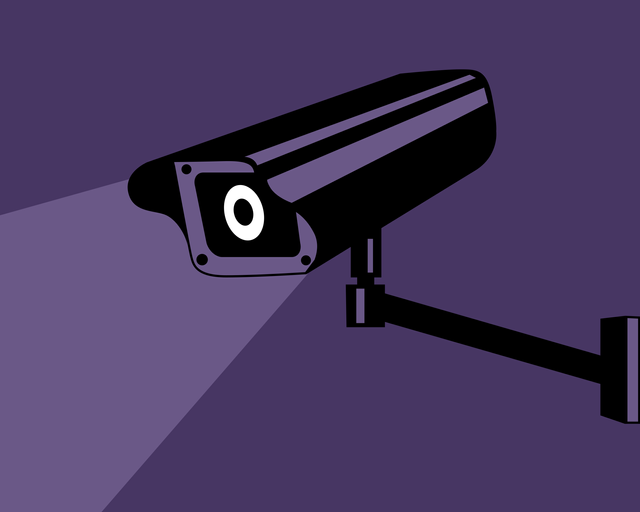
Picture by EFF-Graffics - Wikicommon CC BY-SA 3.0
A surveillance camera
CONCLUSION
Every time I think about man and nature, I can't really help but wonder why these beautiful attributes found in animals and plants are not found in man, the same man that is superior to all these animals and plants. Take for instance, nature endowed birds with the ability to fly but man can't fly (with wings), and the eyes of arthropods (including fire ants) are designed such that they posses multiple lenses in their eyes, which gives them a better, clearer and farther view than man.
But in all these, one thing is certain, and that is that, if man have been endowed with all these attributes, man won't have advanced to the level he is now. Probably, we would have been comfortable flying, and we won't have the need to study, discover an invent things. Of a truth, necessity is the mother of invention. For example, it was the need for a clearer and accurate picture that lead to discovery of this new camera with 180 microlenses.
Right now, scientist and engineers have discovered that the dragonfly has a compound eye that has more than 28,000 microlenses and they are seeking for a way to imitate that in making of a more superior camera. I need not tell you "how great the leap" photography will experience if man finally achieves dream.
Till we meet again.
PS: Check out this DIY article: Sticking Steering Wheel – (Causes and Solutions).
REFERENCES
Bug inspires the invention of new Camera
Dragonflies eyes inspires future cameras
This article is spornsored by mechanicassistant.com and the drivers checklist
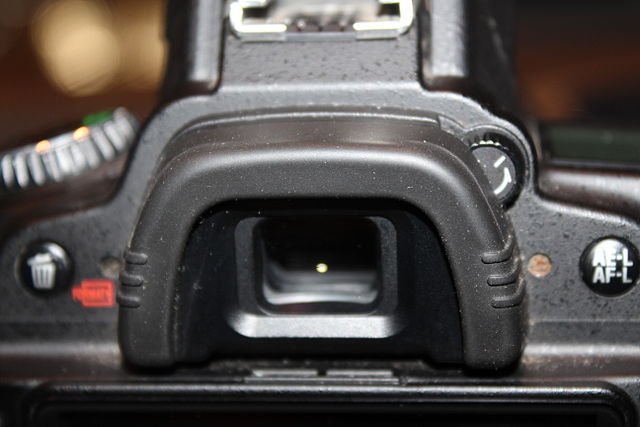
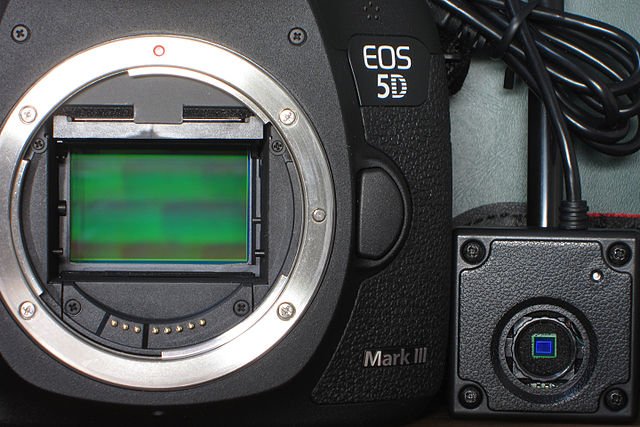
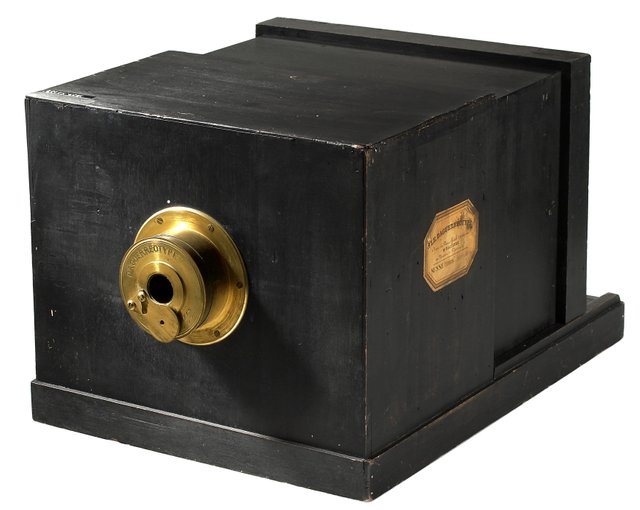
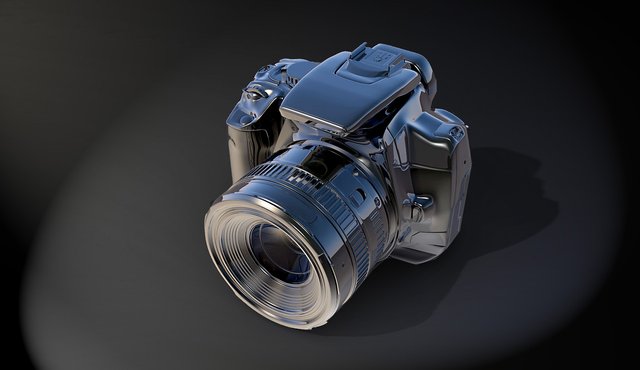
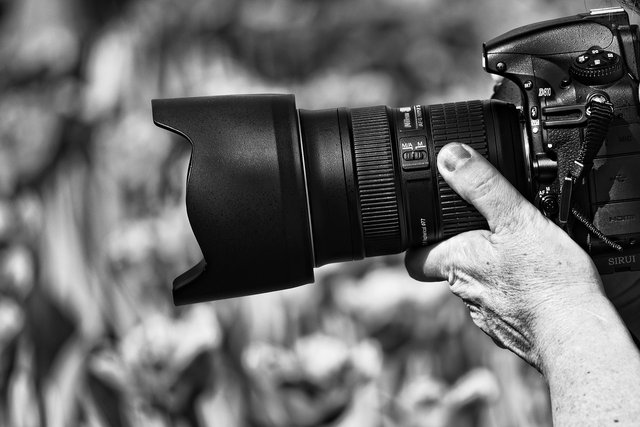

thanks for the invention of cameras i can remember how i looked like years back. great post
Thank you @anyasiemmanuel
Waoo un amplio contenido explicativo. Buen trabajo saludos luz fermin.
gracias... me alegra que hayas parado @luzfermin
You finally posted the article! Sadly since we last talked I didn't have time to post..
Now on topic:
Necessity is indeed what drove us forward and it still does. So the technological progress will follow us, while we dream. Because we always dream and our dreams will fuel the future research :D
Smiles. I finally did, it wasn't easy, am glad am through with it.
The economist says humans wants are insatiable. Since man will never get satisfied, man will never see the end of inventions, (except the world ends).
Please do post yours, @alexdory. I yearn to learn from you.
It's save to say that nature inspired almost every invention we see around us in one way or the other. From the camera to the air-conditioner and even the computer which is designed to work like a human brain.
Very correct.. Every single one of them. Do you know the most interesting about it all? We are yet to see the best invention inspired by nature.. Am glad you enjoyed the article. Thanks for stopping by @dandymee
It's a long read and I was facilitated by this.
really beautiful.
My mind is blown like poofffff!!!!
Thanks for sharing.
Am glad you found it informative @magdnrobinson.. Thanks for taking your time to read my article.
wow.... This is extra ordinarily beautiful. I must admit that for a moment I wished this piece never ended. Just like nature bestowed animals for man, you are such a rare scientist! Nice one...
Thank you for your kind words @humbledeen
I guess it was a deserved comment after all... #smiles
I quite liked the introduction. And the parts from the camera obscura onwards. I never knew philosophers invented the camera!
Am glad you liked it.. @alexander.alexis.. Thanks for reading my article..
Well, Mother Nature has all the answers we need, we just aren't asking the right questions! Great article :)
That's true @dimitrisp.. Nature secrets is like a door's lock. It takes only the right key for the lock to unlock.. Thank you.
Nice one @whileponderin, nature still have more inventions to inspire, I think we just have to hear it's still voice. And this time it went on to work on our cameras, I just wish I can have an inspired solution to my freezing laptop *smiles *
Cool update, like always 👍
There is.. Lol.. If I tell you, you won't think I am serious, so I won't tell you ☺.. Am glad you stopped by @logic42..
@whileponderin
you have done justice to this by making it known to we the readers the power in the lens of human and the above mentioned insect
will like you to visit my page too for upvote on my blog
https://steemit.com/@emmauelalayemi
thanks